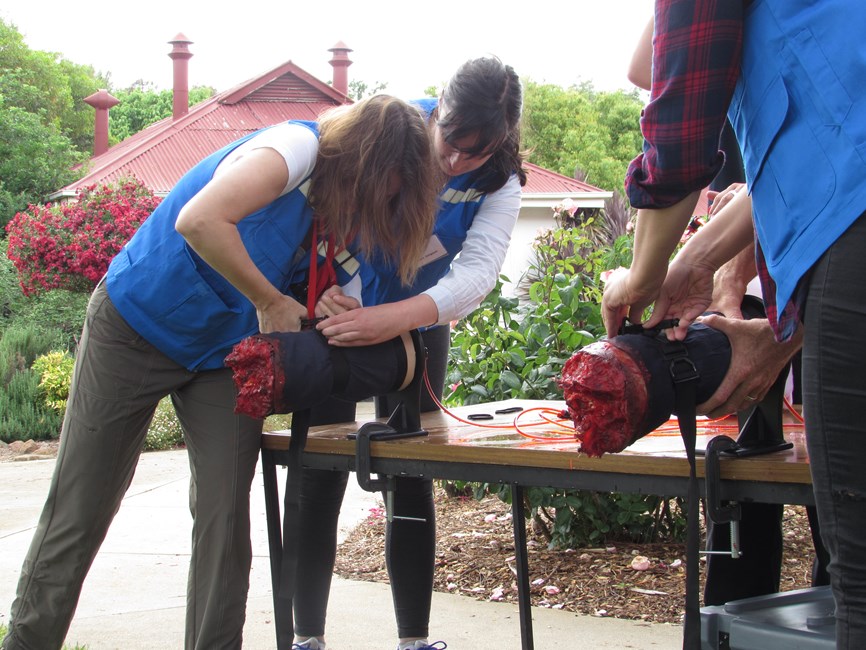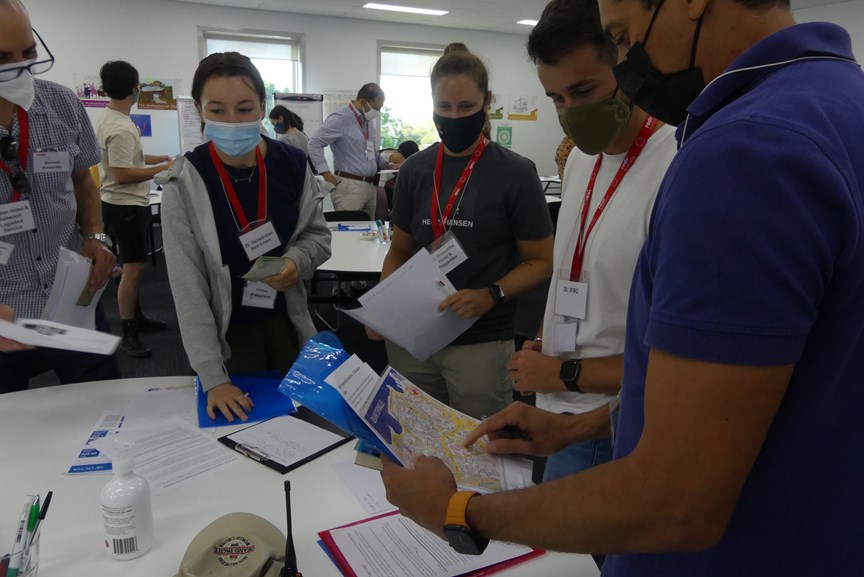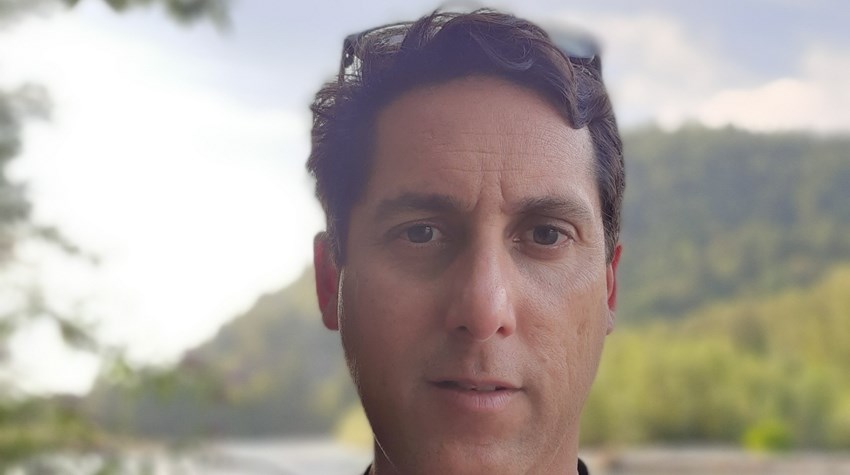When Tim and two fellow firefighters from Fire and Rescue New South Wales (FRNSW) signed up to attend RedR Australia’s Hostile Environment Awareness Training (HEAT) course, they were hoping to learn valuable skills they could apply on the job.
On the second day of the course, in the Tactical Emergency Casualty Care session delivered by RedR Australia partner Real Response, Tim and his colleagues learned how to use a tourniquet – a medical device used to apply pressure to a limb or extremity in order to stop the flow of blood.
“It was almost like an epiphany moment – I could immediately see how this medical intervention could be useful in my everyday work,” Tim said.
As a Station Officer at the time, Tim and his colleague Matthew began researching how other fire services around the world had implemented tourniquets – with a view to pitching it to their employer as a tool integral to each crew’s medical kit.
Based at the City of Sydney Fire Station – one of the state’s largest posts kept busy with road accidents and rescue operations – Tim and his crew were often the first on scene at incidents involving fires, explosions, building collapse and hazardous or unknown materials.
“As firefighters, we already had a plethora of training and tools at our disposal – but I saw the tourniquet as a piece of equipment that would give us the confidence and capability to intervene in additional scenarios,” Tim said.

Participants on RedR Australia's HEAT course learn how to apply tourniquets to props.
With his business case accepted by FRNSW’s management, Tim helped roll out a trial at 17 fire stations in Greater Sydney. Firefighters were trained to apply tourniquets to lifelike bleeding limb props, similar to those Tim encountered on the HEAT course.
“I remember that being particularly helpful in learning the technique – when the bleeding stopped, I knew my application was correct and effective,” Tim said.
With the trial received positively by all participants, tourniquet skills were integrated into the service’s Basic Life Support program – mandatory training undertaken by all firefighters across FRNSW. Today, every truck across the state’s 334 stations is equipped with two tourniquets.
The device is estimated to have saved at least four limbs since it was officially adopted by the service in late 2020 – with crews at Schofields Fire Station putting a tourniquet to use a mere three hours after it was added to their kit. Similarly, firefighters at Gladesville Fire Station used a tourniquet around two weeks after they received training.
“Our motto is ‘prepared for anything’, and now our crews now have the ability to save someone from a life-threatening bleed – whether that be a community member or another firefighter,” Tim said.
This year marks Tim’s 20th anniversary as a firefighter. Beginning his career in the Sydney suburb of Chester Hill, Tim has responded to everything from cat rescues to devastating floods.
As a member of FRNSW’s Urban Search and Rescue team – recognised by the United Nations (UN) and regularly called upon to respond to sudden onset disasters – Tim’s work has also seen him deploy to emergencies around the world.
In 2021, during the global peak of COVID-19 cases, Tim was among 55 specialists from Australian emergency services that provided support to Canada’s wildfires.
Tim is now back home in the role of Acting Superintendent, Operational Improvement and Assurance, based at FRNSW’s headquarters in Sydney’s west.
Earlier this year, Tim attended another RedR Australia course – Essentials of Humanitarian Practice (EHP), where he both shared his experience as a first responder in Canada and learned from others working in humanitarian contexts.
“FRNSW is always looking at external training that will benefit our crews – and just like how the HEAT course taught me to look beyond my immediate context and take a broader view of a situation, the EHP gave me perspective that I can take back to my day job,” Tim said.

Tim (far right) with fellow participants on RedR Australia's EHP course.
With the course equipping participants with the skills to support a humanitarian crisis that requires a global response – including from national governments, UN agencies and non-government organisations – Tim said his biggest takeaway was the importance of considering diversity and inclusion in a response.
“We did an exercise on food assistance, and it made me really think about the different groups in a community – including women, children and people with a disability – and how they might have different circumstances, needs or views in an emergency,” Tim said.
“These are learnings that I can now factor in to my own decision making – here in Australia or overseas – to lead to the best possible outcomes for communities,” Tim said.
Learn more about RedR Australia’s humanitarian training courses: https://redr.org.au/training-courses/our-courses/


